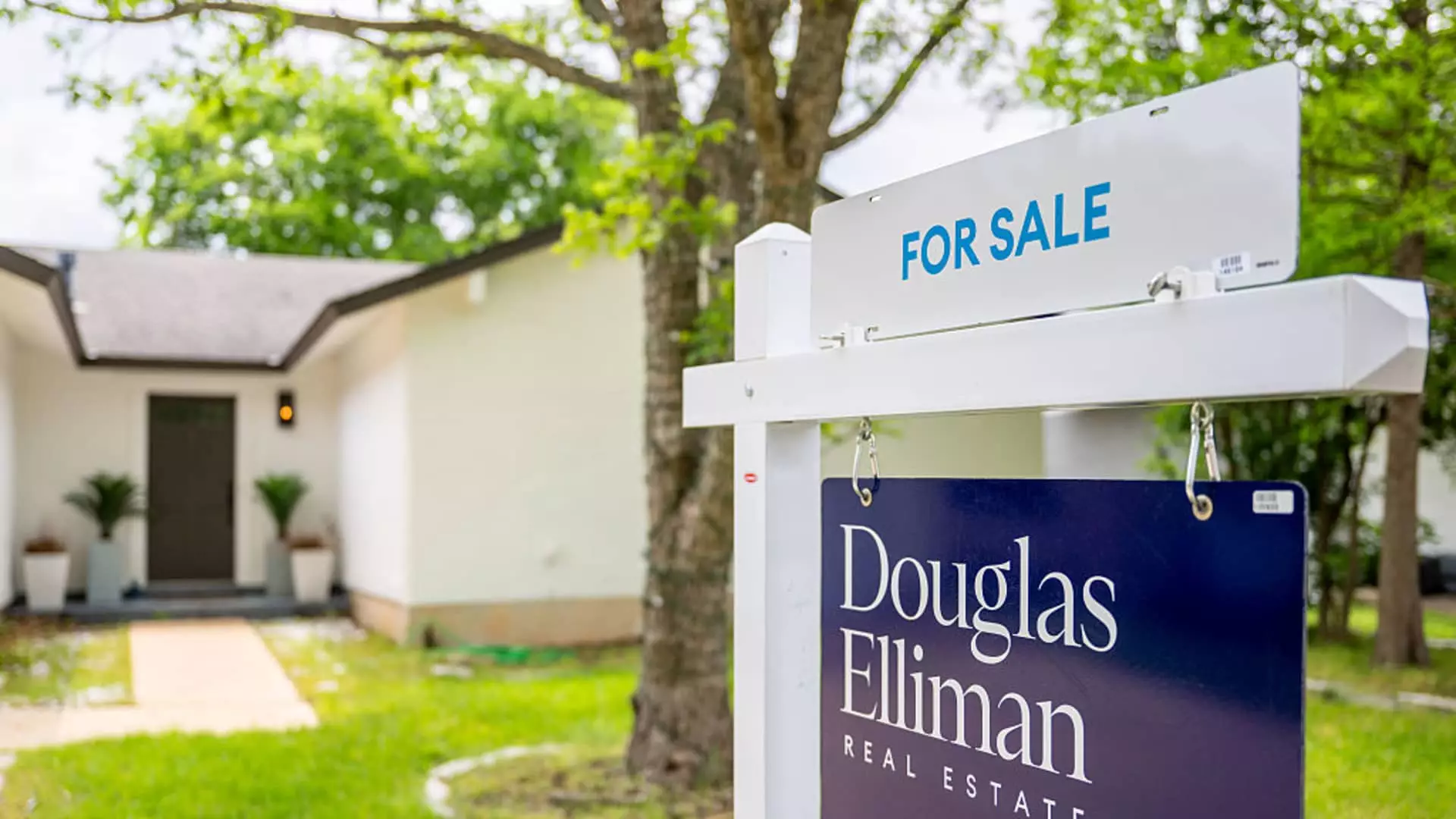In May, the National Association of Realtors (NAR) reported a seemingly positive albeit marginal growth in the sales of previously owned homes—a meager 0.8% increase. With sales now hitting an annualized rate of 4.03 million units, one would expect to celebrate this slight uptick. However, this figure remains a stark reminder of the ongoing struggles within the U.S. housing market, as it still marks a 0.7% decline compared to the same month last year. The fervent hopes of many housing analysts for a recovery have been confounded yet again, as the anticipated 1% decline failed to materialize into a robust market rebound.
This modest rise in sales is deceptive and does not encapsulate the inherent challenges faced by buyers and sellers alike. Sales in the Northeast saw an encouraging rise of 4.2% month-to-month, yet in contrast, the West coast—historically the most expensive region—has witnessed a significant 5.4% decrease. In light of escalating costs, it seems that the dream of home ownership is being unconsciously deferred for many prospective buyers, especially in high-end markets where supply is gradually waning.
The Mortgage Rate Mirage and Its Effect
The fortification of high mortgage rates—surpassing 7% in recent months—acts as a formidable barrier for those contemplating entering the housing market. Lawrence Yun, NAR’s chief economist, aptly stated that it is largely the elevated rates that have quashed buyer enthusiasm. What remains puzzling, however, is the simultaneous reality of strong income growth and a record high number of available jobs in the economy. This juxtaposition reveals a broader riddle: why, in a landscape of seemingly favorable economic indicators, are we still seeing stunted housing sales?
The frustration mounts when considering that a healthy reduction in mortgage rates could potentially unleash a cascade of buyers and sellers reentering the market, invigorating a landscape that feels increasingly stagnant. Perhaps the promise of better conditions in the latter half of the year is the only beacon of hope gleaming in an otherwise dim marketplace.
Supply Level Struggles: Opportunities or Obstacles?
Despite the increase in available inventory—evident with 1.54 million units on the market, a jump of over 20% from last year—the scenario remains dire. This 4.6-month supply is marginally better yet historically remains on the lower side, leading to a continued pressure on housing prices. The median price for an existing home has now peaked at an unprecedented $422,800, signaling a troubling trend: supply may be rising, but demand relative to that supply translates to elevated costs.
Such conditions reflect the hubristic nature of the housing market, where a staggering 28% of homes sold this May were above listing price, illustrating a continued buyer willingness to compete fiercely for desirable properties. Yet beneath this aggressive facade lies a stark reality: the market is inherently imbalanced, with only a negligible increase—1%—in properties in the $750,000 to $1 million range. Prices have risen, yet not all sectors are benefiting equitably, compounding frustrations for both buyers and sellers.
The Need for Change: Navigating a New Normal
As homes remain on the market longer—an average of 27 days compared to just 24 last year—the urgency felt by buyers diminishes, resulting in a leaner pool of first-time buyers contributing to just 30% of transactions. This is indicative of a market where affordability seems increasingly out of reach, particularly for younger demographics. The delicious irony lies in the fact that inaction fuels stagnation; as a substantial portion of transactions are conducted in cash, it becomes abundantly clear that only those with wealth are able to navigate this cumbersome landscape.
If America is to gravitate toward a more equitable housing market, concerted efforts must be made at all levels—legislative, economic, and societal. The current narrative indicates a pressing need for systemic reforms that can rectify imbalances and fortify buyer entry points. Otherwise, the pulse of the housing market may continue to struggle, leaving many behind as they chase an elusive dream that seems to be forever just out of reach.

